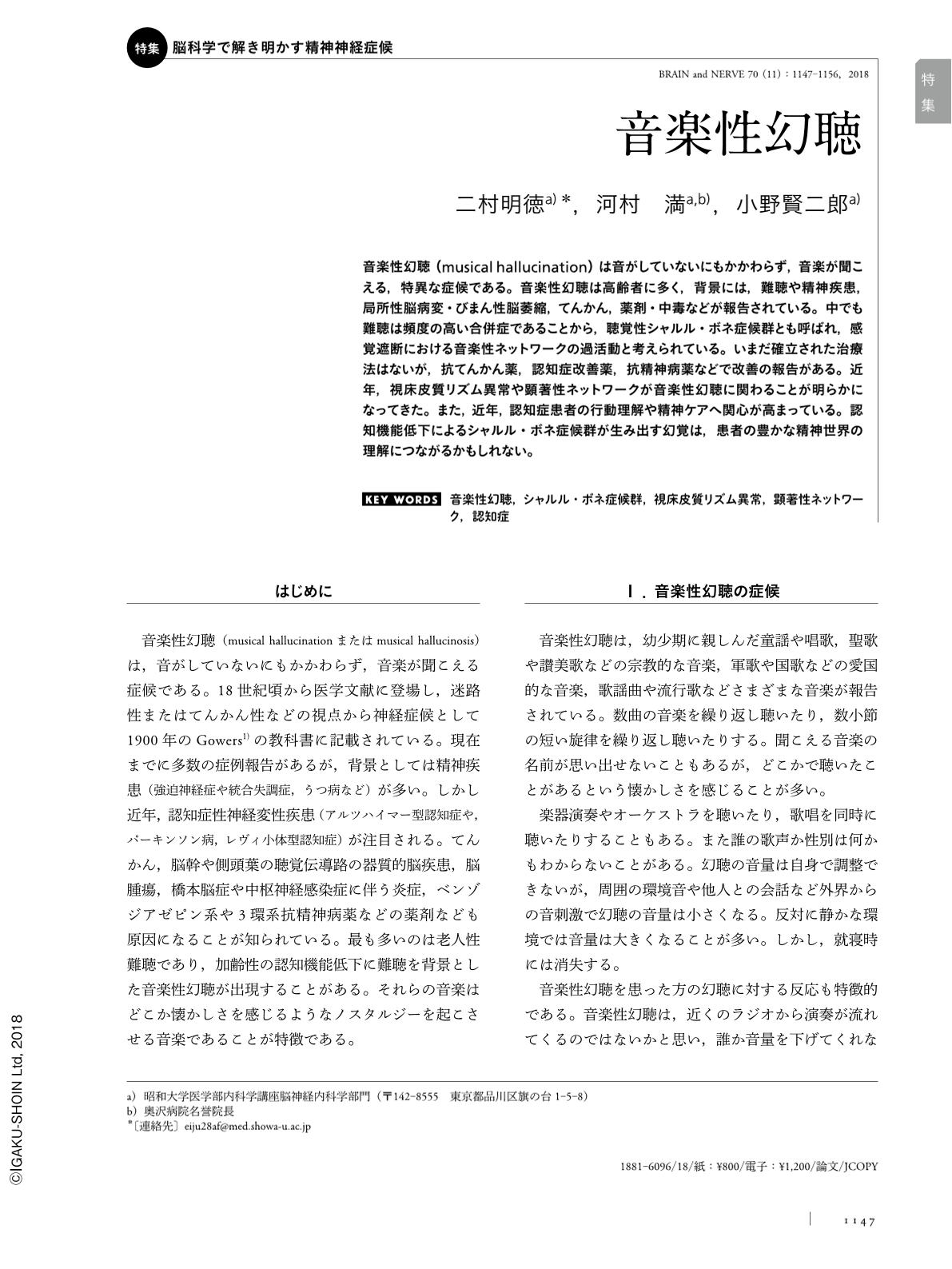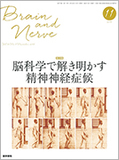Japanese
English
- 有料閲覧
- Abstract 文献概要
- 1ページ目 Look Inside
- 参考文献 Reference
音楽性幻聴(musical hallucination)は音がしていないにもかかわらず,音楽が聞こえる,特異な症候である。音楽性幻聴は高齢者に多く,背景には,難聴や精神疾患,局所性脳病変・びまん性脳萎縮,てんかん,薬剤・中毒などが報告されている。中でも難聴は頻度の高い合併症であることから,聴覚性シャルル・ボネ症候群とも呼ばれ,感覚遮断における音楽性ネットワークの過活動と考えられている。いまだ確立された治療法はないが,抗てんかん薬,認知症改善薬,抗精神病薬などで改善の報告がある。近年,視床皮質リズム異常や顕著性ネットワークが音楽性幻聴に関わることが明らかになってきた。また,近年,認知症患者の行動理解や精神ケアへ関心が高まっている。認知機能低下によるシャルル・ボネ症候群が生み出す幻覚は,患者の豊かな精神世界の理解につながるかもしれない。
Abstract
Musical hallucination is one of the most complex forms of auditory hallucinations, where subjects perceive complex sound in the form of music, in the absence of an acoustic stimulus. It has been reported in patients with diseases such as psychiatric disorders, organic brain diseases, and epilepsy. However, the most common of these are idiopathic musical hallucinations that occur alongside deafness in the elderly. In recent years, there have been many reports of musical hallucination occurring as a result of mild cognitive impairment and dementia. Musical hallucinations accompanying hearing loss may reflect deterioration of cerebral function. It has been suggested that auditory Charles Bonnet syndrome is a pathophysiological mechanism of musical hallucination. The decrease in auditory stimulation and activation of the auditory network may activate the cerebral network in relation to music. It is also thought that musical hallucination appears from disintegration of the complementary relationship between sensation and memory. Treatment is still the focus of extensive investigation. Some authors have reported that hearing aids, antiepileptic drugs, anticholinergics, and antipsychotics can relieve musical hallucination. It is possible that such treatment may lead to relief of musical hallucination in patients with various background diseases. Population aging in Japan has exceeded 20%, which is the highest in the world; therefore, there may be many undiagnosed patients throughout the country.

Copyright © 2018, Igaku-Shoin Ltd. All rights reserved.


